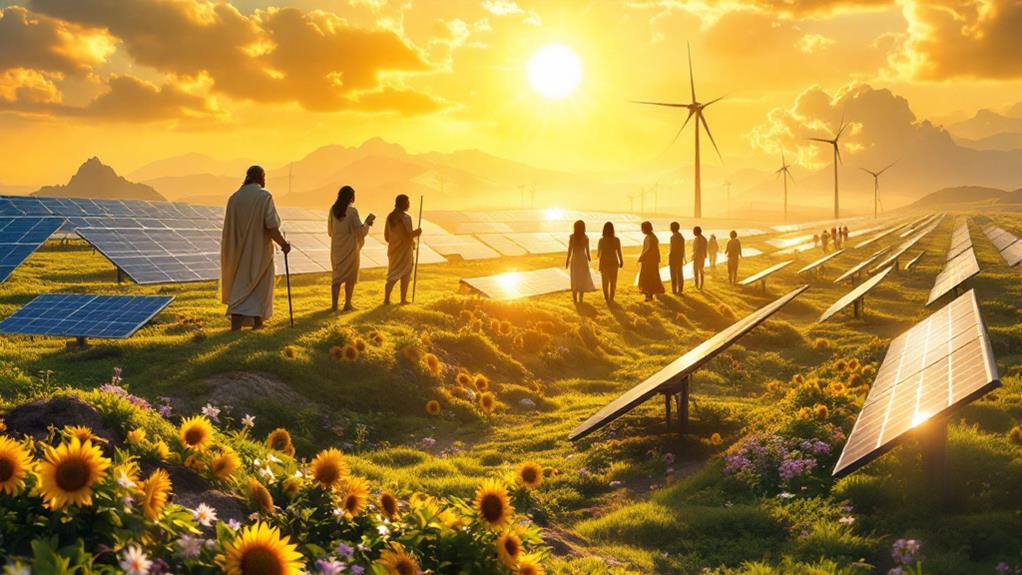A Short History of Drones and Their Rise to Popularity: From Military Use to Everyday Tech
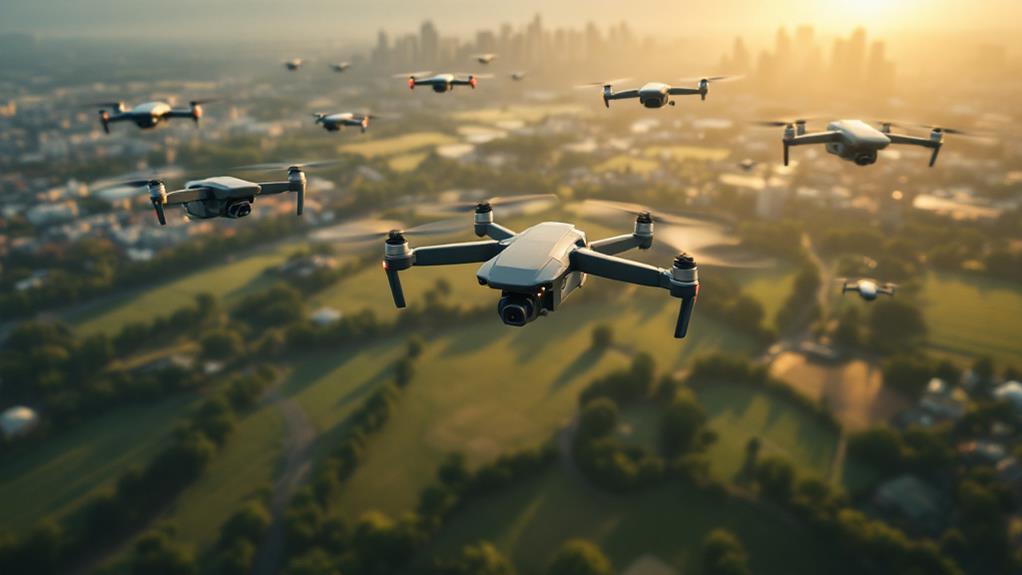
Drones have come a long way since their military origins in the mid-19th century. You've seen them evolve from unmanned balloons used for reconnaissance to sophisticated machines with advanced sensors and autonomous capabilities. The consumer drone revolution, led by companies like DJI, has brought these flying marvels into your backyard. Now, drones are reshaping industries from agriculture to filmmaking, offering new viewpoints and innovative solutions. As regulations adapt to address safety and privacy concerns, drones continue to push boundaries in delivery services, search and rescue, and scientific research. The sky's the limit for what these versatile devices can accomplish in the future.
Early Military Origins
When did the concept of drones first emerge? You might be surprised to learn that the idea of unmanned aerial vehicles dates back to the mid-19th century. During the American Civil War, both Union and Confederate forces experimented with unmanned balloons for aerial reconnaissance. These early attempts laid the groundwork for future developments in unmanned warfare.
The first true drones appeared during World War I, with the Kettering Bug, an unmanned aerial torpedo. However, it wasn't until World War II that drones saw significant advancements. The Germans developed the V-1 flying bomb, while the United States created radio-controlled aircraft for target practice.
The Cold War era brought further innovations in drone technology. The U.S. military used drones extensively for reconnaissance missions over hostile territories. In the 1960s, the Ryan Firebee became one of the most widely used reconnaissance drones, gathering essential intelligence during the Vietnam War.
Technological Breakthroughs
Several technological breakthroughs in the late 20th and early 21st centuries propelled drones into a fresh chapter of capability and versatility. You've likely noticed the rapid evolution of these flying machines, and it's all thanks to a series of innovations.
Sensor advancements played an essential role in this transformation. Miniaturized gyroscopes, accelerometers, and GPS modules allowed drones to achieve unparalleled stability and positioning accuracy. These improvements made drones easier to control and opened up new possibilities for both recreational and professional use.
Another game-changer was the development of autonomous algorithms. These sophisticated programs enabled drones to navigate complex environments, avoid obstacles, and even make decisions without human input. You can now see drones performing intricate maneuvers and completing tasks with minimal operator intervention.
Battery technology also saw significant progress, extending flight times and increasing payload capacities. Coupled with more efficient motors and propellers, drones became capable of longer missions and heavier lifting.
Consumer Drone Revolution

With the technological groundwork laid, the consumer drone revolution took flight in the early 2010s. You'd suddenly find these compact flying machines in parks, beaches, and even your neighbor's backyard. Companies like DJI, Parrot, and Yuneec began releasing affordable, user-friendly drones that captured the imagination of backyard hobbyists and tech enthusiasts alike.
As prices dropped and features improved, consumer drone enthusiasts multiplied. You could now easily capture stunning aerial photographs and videos, investigate hard-to-reach places, or simply enjoy the thrill of piloting a miniature aircraft. Drones became popular for everything from wedding photography to real estate marketing.
However, this rapid growth didn't come without challenges. You'd soon see new regulations emerging to address privacy concerns, air traffic safety, and no-fly zones. Despite these obstacles, the consumer drone market continued to expand, with global sales skyrocketing into billions of dollars annually.
As drones became more sophisticated, you'd find them equipped with obstacle avoidance systems, longer flight times, and even autonomous flying capabilities. This technological evolution altered drones from niche gadgets into versatile tools for both work and play, solidifying their place in modern society.
Commercial Applications Take Flight
As consumer drones soared in popularity, businesses began to recognize their potential for commercial applications. You'll find drones now being used across various industries, revolutionizing how companies operate and collect data.
In agriculture, drones have become crucial tools for monitoring crops and livestock. They provide farmers with aerial views of their fields, helping detect issues like pest infestations or irrigation problems early on. This technology allows for more efficient resource management and increased crop yields.
Infrastructure inspection has also been transformed by drone technology. You'll see utility companies using drones to inspect power lines, pipelines, and wind turbines. These aerial inspections are safer, quicker, and more cost-effective than traditional methods involving human inspectors.
Real estate, construction, and filmmaking industries have adopted drones for aerial photography and videography. You can now easily capture stunning aerial shots of properties or construction sites, enhancing marketing materials and project documentation.
Delivery services are exploring drone technology to revolutionize package delivery. While still in development, you might soon see drones dropping off your online orders directly to your doorstep, reducing delivery times and costs.
As regulations evolve and technology advances, you can expect to see even more innovative commercial drone applications in the future.
Regulatory Challenges and Solutions
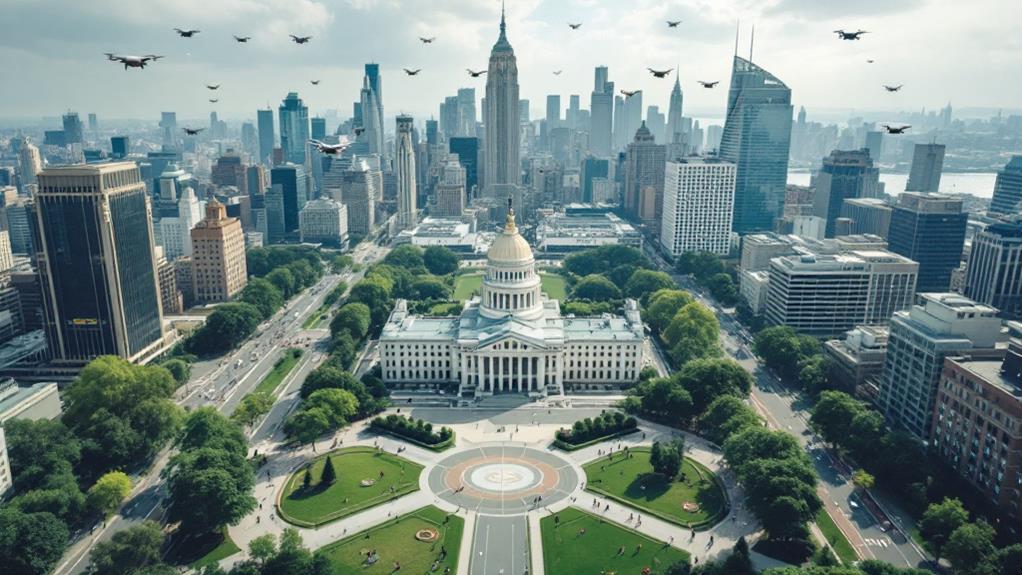
The rapid rise of drone technology has brought about a host of regulatory challenges. As drones become more prevalent in our skies, governments and aviation authorities have had to scramble to create new rules and regulations to promote safety and address privacy concerns.
You'll find that airspace management has become a critical issue, with authorities working to integrate drones into existing air traffic control systems. Privacy concerns have also taken center stage, as the ability of drones to capture aerial footage has raised questions about personal privacy and data protection.
To address these challenges, regulators have implemented various solutions:
- Mandatory drone registration
- Pilot licensing requirements
- No-fly zones around sensitive areas
- Remote ID systems for drone tracking
These measures aim to strike a balance between nurturing innovation and ensuring public safety. You'll need to stay informed about the changing regulations in your area, as they can vary significantly between countries and even local jurisdictions. As drone technology continues to advance, you can expect regulatory frameworks to adapt and become more sophisticated, addressing emerging issues and refining existing rules to keep pace with this rapidly evolving industry.
Drones in Photography and Filmmaking
Drones have revolutionized the world of photography and filmmaking, offering creators unparalleled access to stunning aerial viewpoints. You'll find that these flying cameras have transformed the way we capture settings, events, and cityscapes from above. Aerial photography has become more accessible than ever, allowing both professionals and hobbyists to achieve shots that were once only possible with expensive helicopter rentals.
In the domain of cinematic storytelling, drones have opened up new possibilities for directors and cinematographers. You can now seamlessly incorporate sweeping aerial shots into your productions, adding depth and grandeur to your visual narratives. From establishing shots of vast settings to dynamic chase sequences, drones have become an essential tool in the filmmaker's arsenal.
As drone technology continues to advance, you'll see improvements in image quality, flight stability, and ease of use. These enhancements are making it easier for creators to go beyond the boundaries of their art. Whether you're capturing breathtaking nature scenes or documenting urban environments, drones offer a unique viewpoint that's reshaping the visual arts milieu.
Delivery Services by Air
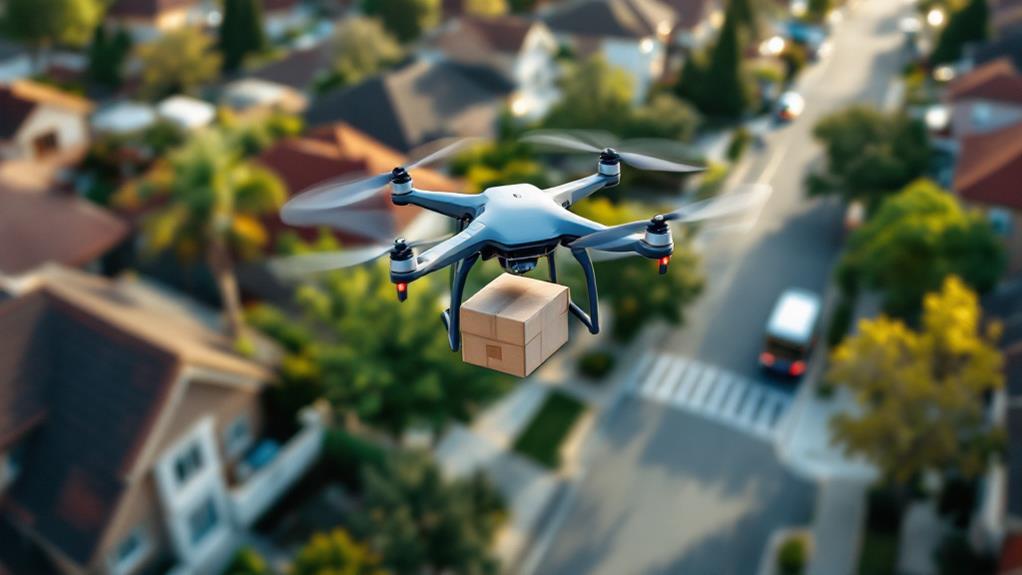
Beyond their role in photography and filmmaking, drones are now taking to the skies for a more practical purpose: delivery services. You'll soon see these aerial vehicles zipping through your neighborhood, carrying packages right to your doorstep. Companies like Amazon, Google, and UPS are investing heavily in drone technology to reimagine package delivery and urban air mobility.
- Faster deliveries: Drones can bypass traffic and deliver packages in minutes
- Reduced carbon emissions: Electric drones are more environmentally friendly than trucks
- Access to remote areas: Drones can reach locations that are difficult for traditional vehicles
- Cost-effective: Automated deliveries can drastically reduce operational costs
As drone technology advances, you'll witness a change in how goods are transported. These flying robots will become an integral part of urban air mobility, creating a network of aerial highways above our cities. While regulations and safety concerns still need to be addressed, the future of package delivery is undoubtedly in the air. You'll soon find yourself tracking your parcels not on the road, but in the sky.
Search and Rescue Operations
In addition to commercial applications, drones have become priceless tools for search and rescue operations. You'll find these unmanned aerial vehicles (UAVs) assisting in locating missing persons, surveying disaster-stricken areas, and delivering essential supplies to hard-to-reach locations.
During disaster response efforts, drones equipped with thermal cameras can quickly scan large areas, detecting heat signatures of survivors amidst rubble or dense forests. They're also used to assess damage and create real-time maps, helping first responders navigate treacherous terrain safely and efficiently.
In humanitarian aid missions, drones play a pivotal role in delivering medical supplies, food, and water to isolated communities. They can bypass damaged infrastructure and reach areas that might be inaccessible by traditional means, potentially saving countless lives.
Search and rescue teams have embraced drone technology for its ability to cover vast areas quickly and safely. Whether it's searching for lost hikers in remote wilderness or monitoring coastal areas for distressed swimmers, drones provide a bird's-eye perspective that was previously unavailable or prohibitively expensive. This enhanced viewpoint significantly improves the chances of successful rescue missions and reduces risks for human rescuers.
Environmental and Scientific Research
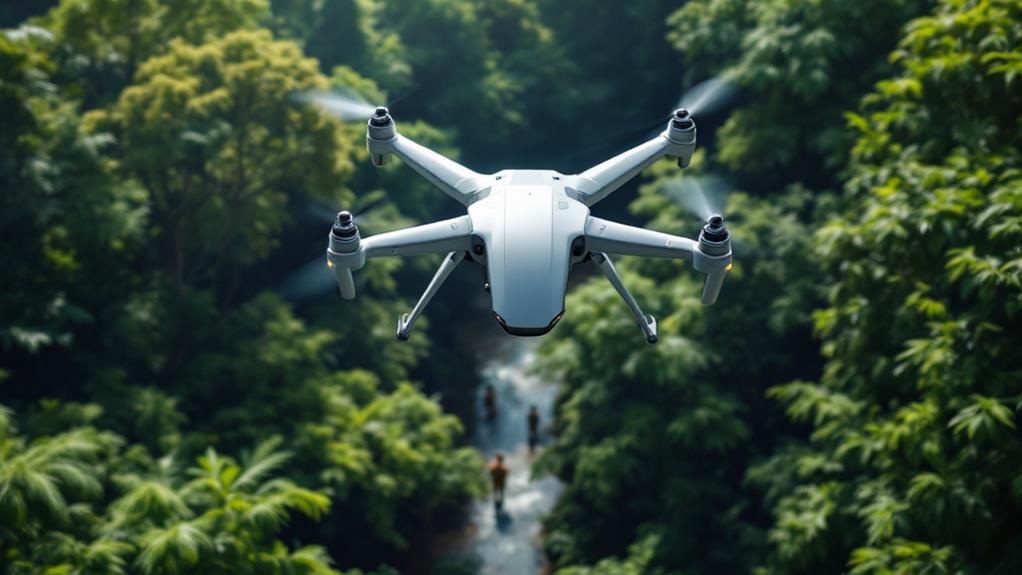
The domain of environmental and scientific research has been revolutionized by the advent of drone technology. You'll find drones playing a vital role in habitat monitoring and wildlife tracking, offering researchers unmatched access to remote and challenging environments. These aerial tools have become indispensable for collecting data on ecosystems, animal populations, and climate change impacts with minimal disturbance to the subjects being studied.
Drones have expanded scientific capabilities in numerous ways:
- Aerial surveys: You can now map large areas quickly and accurately, creating detailed 3D models of terrain.
- Wildlife observation: Drones allow you to monitor animal behavior and migrations without human interference.
- Environmental sampling: You're able to collect air, water, and soil samples from hazardous or inaccessible locations.
- Disaster assessment: You can rapidly evaluate the impact of natural disasters on ecosystems and communities.
Future Trends and Innovations
Emerging technologies are set to propel unmanned aerial vehicles into even more diverse and sophisticated applications. You'll see drones becoming increasingly autonomous, with advanced AI systems enabling them to plunge complex environments without human intervention. Autonomous plumbing will allow drones to operate in areas where GPS signals are weak or unavailable, opening up new possibilities for exploration and data collection.
Swarm intelligence is another exciting development you'll encounter. This technology allows multiple drones to work together as a coordinated group, tackling tasks that would be impossible for a single drone. You'll witness swarms of drones performing intricate aerial displays, conducting large-scale environmental surveys, or even assisting in search and rescue operations.
You can expect to see drones with longer flight times, improved payload capacities, and enhanced sensors. These advancements will make drones more versatile and efficient across various industries. Additionally, you'll notice a push towards quieter, more energy-efficient designs, addressing concerns about noise pollution and environmental impact. As regulations evolve to accommodate these innovations, you'll see drones becoming an even more integral part of our daily lives and industrial operations.
